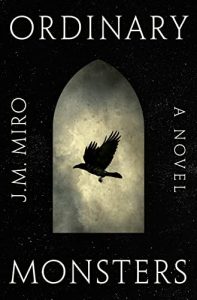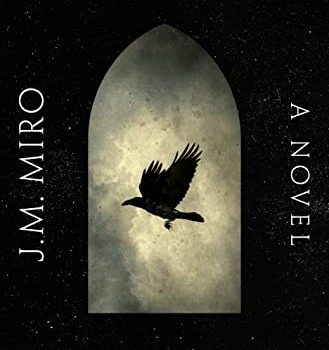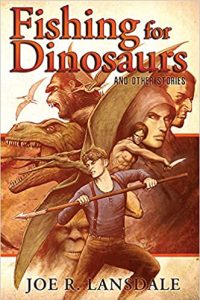Alex Brown Reviews Ordinary Monsters by J.M. Miro
 Ordinary Monsters, J.M. Miro (Flatiron 978-1-25083-366-2, $28.99. 660pp, hc) June 2022.
Ordinary Monsters, J.M. Miro (Flatiron 978-1-25083-366-2, $28.99. 660pp, hc) June 2022.
In a freight train boxcar, a runaway servant discovers a glowing baby in the arms of his dead wetnurse. In a dusty theater in Meiji-era Japan, a girl tries to save her monstrous little sister. In a fetid jail cell in Mississippi, a Black teen is tortured by racist townsfolk. In a dank alleyway in Vienna, a boy weeps over the body of his dead brother. In a cult compound, a girl watches her mother burn her fellow congregants alive. In a blood-smeared flat in London, a monster waits for instructions. And in a grand Scottish estate, a mad scientist sets his plans into motion.
Ordinary Monsters, the first novel in a fantasy trilogy by J.M. Miro, is vast in scope, cast, and concept. Miro shows us the lives of numerous characters, some who appear only briefly and others who take up the bulk of the novel. There are a handful of key characters who get the bulk of the attention, but it is young Marlowe around whom much of the plot revolves.
Former Pinkerton detective Alice Quicke and Frank Coulton, a man who knows more than he says and has seen more than he reveals, arrive in Mississippi. They’re tracking Charlie Ovid, who has the remarkable ability to heal. Before returning to the UK, they split off and collect a child, Marlowe, from his home in a circus. His ability, called a ‘‘talent,’’ is different yet no less strange: he can summon a brilliant blue glow and burn a person from the inside out. He and Alice are being hunted by sinister forces. Jacob Marber, a Talent with a grudge a mile long and a willingness to slaughter everyone in his way to get what he wants, was seduced to the dark side by a creature from the orsine (another plane of existence) called a drughr. The drughr, Jacob, and his litch (think Renfield from Dracula but as a reanimated corpse) all want Marlowe for reasons unknown.
Also extremely interested in ‘‘the shining boy’’ is Dr. Berghast, the wealthy benefactor employing Alice and Frank. Berghast runs the Cairndale Institute in rural Scotland, a school for Talents. When Charlie and Marlowe arrive, they’re paired up with other children close in age: Ribs the invisible girl, Komako who can manipulate dust, and Oskar and his Frankenstein-like flesh monster. Other Talents, both old and young, live at the estate, while those who have lost their abilities are exiled to London and beyond. Berghast plays the part of the father figure eager to look after his unique children, but there is a dark undercurrent running through him.
The conflict of Jacob and the drughr chasing after Marlowe and everyone else trying to keep the boy away from them forms the central plot. Charlie and Marlowe are sent off on a subplot into the orsine, the other children head to Edinburgh to investigate the case of the missing Talents and the dying glyphic (the Talent that manages the door to the orsine), and Alice and Margaret Harrogate, her handler and Berghast’s second in command, end up in London battling Jacob and another litch with the help of the women’s equally frightening cat-like creature. Scattered in between are scenes from the past that give the reader clues as to what’s about to happen in the present or reveal a different version of a story the reader has already seen.
Even with all these moving pieces and huge cast, the story is fairly straightforward and recognizable. The Chosen One and the magical school for children tropes are used a lot in fantasy, and Miro’s take on them isn’t the most inventive (for that you need to look at QT/BIPOC fantasies like the Wolves of No World series by Romina Garber, the Wayward Children series by Seanan McGuire, and Magic for Liars by Sarah Gailey). Rather, it’s his world and writing style that make the book worth reading. The story is even more sprawling than its nearly 700 pages let on. This is a novel that, as big as it is, feels like only a sliver of what’s to come. I could wander down Miro’s side paths and backstories all day. Despite its length and tendency toward meandering through the past, the story moves quickly. Every sentence, every word has a reason for being on the page. The text is taught and tense without being terse.
I managed to get advanced reader copies in both print and audiobook. Personally, I preferred the audio, with the caveat that while narrator Ben Onwukwe was good at voicing English men and boys, I found his attempts at other accents, including the voices of women and girls, were varying degrees of unsuccessful: a challenge for me since most of the characters fall into at least one of those categories. However, his deep baritone and patient drawl made the story even more intense and unsettling. With the print book, I found myself rushing through the story because I was interested in seeing what would happen next; the audio forced me to slow down and sink into the experience.
I’ve seen this novel described as a Dickensian X-Men, but it’s probably closer to Miss Peregrine’s Home for Peculiar Children meets Jonathan Strange and Mr Norrell. The premise is neither new nor especially unique, and fans of fantasy fiction will spot the plot twists a mile away. That said, the story overall is immersive and enchanting. Readers looking for a book with extensive world building and character background exploration will delight in J. M. Miro’s Ordinary Monsters. I’m looking forward to books two and three.
Alex Brown is a queer Black librarian and writer. They have written two books on the history of Napa County, California’s marginalized communities. They write about adult and young adult science fiction, fantasy, and horror as well as BIPOC history and librarianship. Diversity, equity, inclusion, and access set the foundation of all their work. Alex lives in Southern California with their pet rats and ever-increasing piles of books.
This review and more like it in the Sepetmber 2022 issue of Locus.
 While you are here, please take a moment to support Locus with a one-time or recurring donation. We rely on reader donations to keep the magazine and site going, and would like to keep the site paywall free, but WE NEED YOUR FINANCIAL SUPPORT to continue quality coverage of the science fiction and fantasy field.
While you are here, please take a moment to support Locus with a one-time or recurring donation. We rely on reader donations to keep the magazine and site going, and would like to keep the site paywall free, but WE NEED YOUR FINANCIAL SUPPORT to continue quality coverage of the science fiction and fantasy field.
©Locus Magazine. Copyrighted material may not be republished without permission of LSFF.








